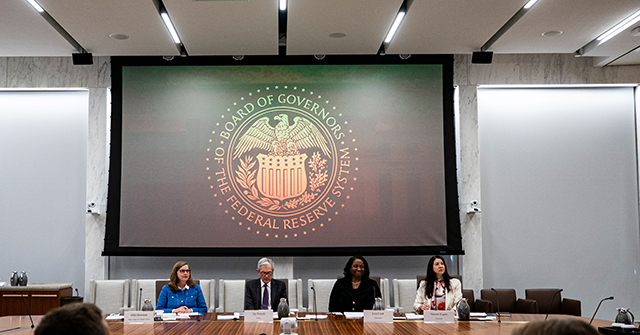The Fed Is Trapped in Groupthink About Tariffs
If you were wondering how Federal Reserve officials view Donald Trump’s tariff plans, the latest Federal Open Market Committee (FOMC) minutes make one thing perfectly clear: they all think tariffs are inflationary. That view is not up for debate inside the Eccles Building. Every participant who spoke about tariffs at the June meeting assumed they would push prices higher, with no dissenters and no counterpoint.
The debate wasn’t over whether tariffs would raise prices, but how much, how fast, and how long the effect would last. Some officials suggested the impact might be modest or delayed—especially if businesses were still working through inventory purchased before tariffs hit. Others noted that smaller firms and narrow-margin sectors would have no choice but to pass costs on to consumers. Still others warned that even businesses not directly affected might use the tariff environment to raise prices on complementary products. Several raised concerns about inflation expectations becoming unanchored.
“Participants noted that increased tariffs were likely to put upward pressure on prices,” the minutes report without qualification.
This reflex wasn’t limited to policymakers. The Fed staff took the same view, projecting that tariffs would “raise inflation this year and provide a small boost in 2026.” But they actually revised their inflation outlook downward in June and upgraded their growth forecast. Why? Because they assumed effective tariff rates would remain lower than in April, due to the 90-day pause Trump agreed to in May:
“The staff projection of real GDP growth… was higher than the one prepared for the May meeting, primarily because trade policy announcements led the staff to reduce their assumptions about effective tariff rates.”
That assumption now looks outdated. The 90-day pause has expired, and this week the Trump administration began rolling out a second wave of tariffs, including new duties on copper and pharmaceuticals and broader enforcement on strategic imports. Effective tariff levels are now returning to the “Liberation Day” rates announced in April—and in some categories, surpassing them.
This likely means another upward revision to the Fed’s inflation outlook. But the deeper concern isn’t the forecast—it’s the Fed’s failure to challenge its own assumptions.
Dogmatic Monetary Policy Is Dangerous
What’s troubling is that there appears to be no intellectual diversity on this issue inside the central bank. Not one participant questioned whether tariffs might have non-inflationary or even deflationary effects by dampening demand. No one raised the possibility that tariffs could strengthen domestic industry, reallocate supply chains, or reduce dependency on adversaries. The only thing up for debate was how strongly and how persistently prices would rise.
That consensus may be politically convenient in elite circles, but it’s analytically fragile. It ignores the possibility that tariffs are a tool for structural economic reform, not a short-term price lever. It treats all trade adjustments as costs—never as investments.
The Fed has made this mistake before. In 2021, it dismissed inflation as “transitory,” failed to adjust quickly, and let price pressures spiral. Now, chastened by that failure, it sees inflation threats everywhere—even when the data has been pushing in the opposite direction. The result is a central bank that reflexively treats tariffs as inflationary, regardless of their scope, context, or long-term benefits.
That’s not caution. That’s dogma.
And with tariffs returning to the center of U.S. economic policy, it’s a dogma that may once again put the Fed at odds with the elected president.
Read the full article here


